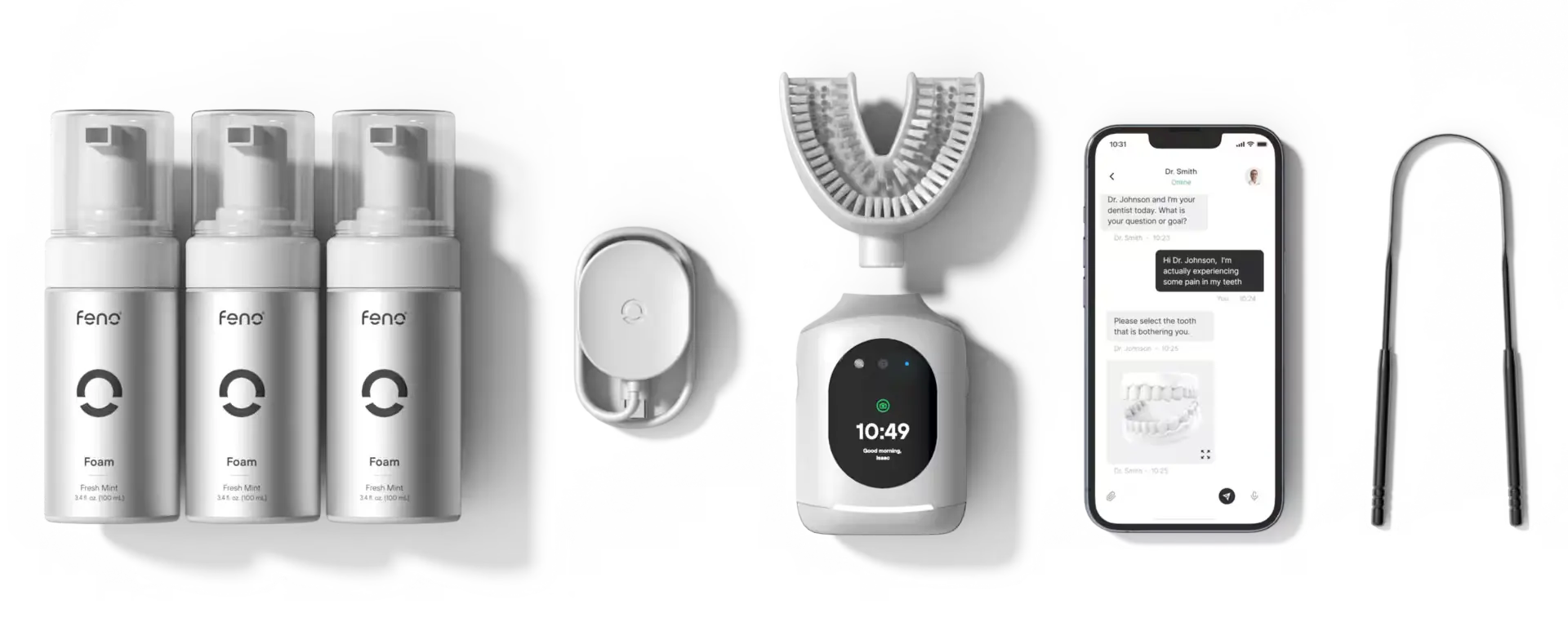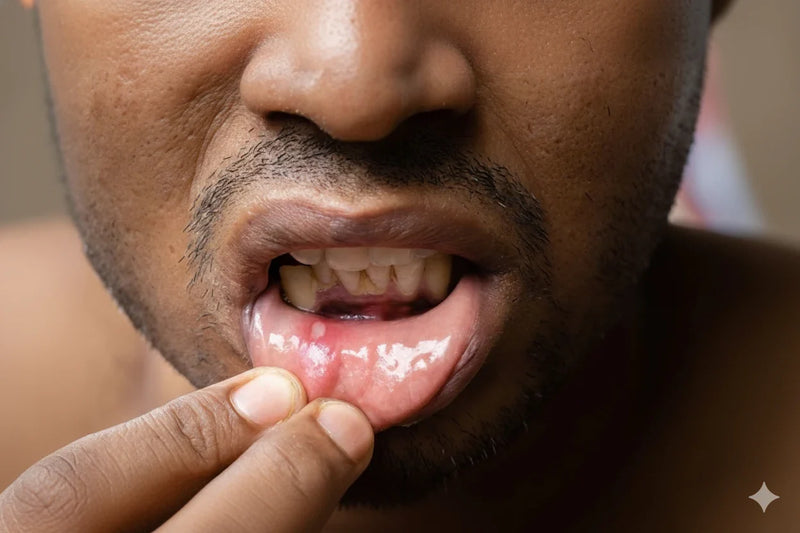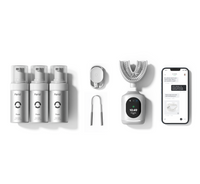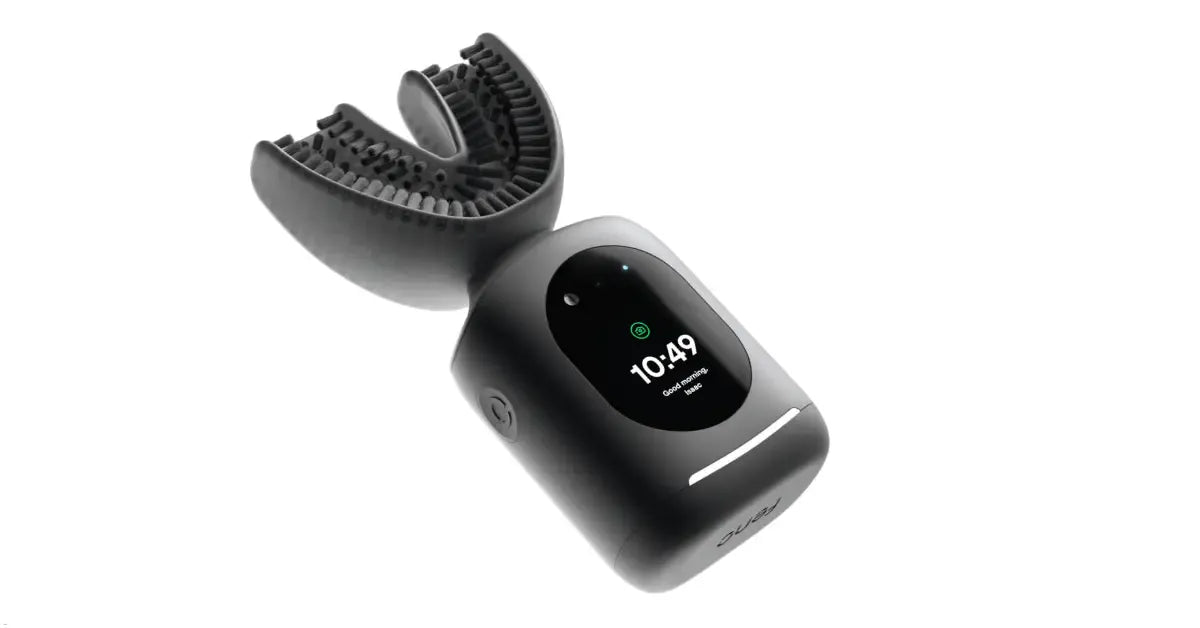
11 min read
Full-Mouth Toothbrush Vs. Traditional: A Comparison
Essential Takeaways
- Maintaining healthy gums is essential for overall well-being, as they secure your teeth and protect deeper tissues from harmful bacteria.
- Using a soft-bristled, electric toothbrush or innovative designs like U-toothbrushes effectively removes plaque and reduces gingivitis.
- Consistent flossing with proper techniques and tools (e.g., floss threaders) cleans between teeth and along the gum line, preventing debris buildup.
- Regular dental check-ups and proper brush maintenance further support long-term gum health
In the evolving landscape of dental hygiene, the choice between a full-mouth toothbrush and a traditional toothbrush has become a topic of interest for many seeking the best oral care solutions. A full-mouth toothbrush, often referred to as a U-shaped toothbrush or whole-mouth toothbrush, is designed to clean all teeth simultaneously with a mouthguard-like design. On the other hand, traditional toothbrushes, familiar to most people, feature a straight handle and bristles at one end for manual brushing. Each type offers unique benefits, tailored to different preferences and needs.

Understanding Full-Mouth Toothbrushes
Design Features
The best whole-mouth toothbrush is characterized by its innovative design which covers the entire set of teeth with a U-shaped brush head. This design typically integrates soft, silicone bristles that vibrate or rotate to clean the teeth and gums effectively. Many models are equipped with ergonomic handles that enhance comfort and ease of use. The comprehensive coverage of these brushes ensures that every tooth surface is reached, potentially reducing brushing time while maximizing efficiency.
How It Works
When activated, these devices generate rapid vibrations or rotational movements, which facilitate the removal of plaque and debris across the entire dental arch. This simultaneous cleaning action is particularly advantageous for individuals who find it challenging to brush thoroughly with a traditional toothbrush. By simplifying the brushing process, these toothbrushes encourage better dental hygiene practices.
Benefits for Users with Limited Dexterity
One of the key advantages of using a full-mouth toothbrush is its ease of use for individuals with limited dexterity, such as the elderly or those with physical disabilities. The design minimizes the need for precise, repetitive motions required by traditional brushes. This accessibility makes it an excellent option for those who might otherwise struggle with the coordination needed for effective tooth brushing, helping them maintain their oral health without added strain.
Suitability for Children
Young users often find the automatic functions of these toothbrushes more engaging, which can lead to more consistent brushing habits. Additionally, the less complex brushing technique reduces the risk of improper cleaning, which is a common issue with manual toothbrushes in young children. Parents may find these brushes helpful in teaching kids about oral hygiene in a fun and effective way.
Advantages of Traditional Toothbrushes
Precision and Control in Cleaning
Traditional toothbrushes excel in providing precision and control, which are crucial for effective plaque removal. The design allows users to target specific areas of the mouth that may require more attention, such as the gum line and spaces between teeth. This control is especially beneficial for those with complex dental work, such as braces or bridges, where a u toothbrush may not reach all crevices and corners precisely. The manual operation ensures that users can adjust their brushing technique and pressure according to their personal needs and sensitivities.
Variability in Bristle Type and Stiffness
Traditional toothbrushes offer a significant level of customization through the variability in bristle type and stiffness, which is crucial for adapting to individual dental needs and preferences. This variety allows users to select from soft, medium, or hard bristles depending on their specific requirements, such as gum sensitivity or the presence of dental appliances like braces. Soft bristles are generally recommended for most people as they are gentle on the gums and sufficient to remove plaque without causing abrasion to the enamel or gum tissue. Medium bristles provide a firmer feel which some may find more effective at cleaning, especially for those without sensitive teeth or gums. Meanwhile, hard bristles, though less commonly recommended due to their potential to cause gum recession and enamel wear, can be suitable for individuals who might have heavier plaque build-up.
In addition to bristle stiffness, traditional toothbrushes also vary in the design of the brush head. The size, shape, and pattern of bristles can be selected to match different mouth shapes and brushing styles. Some brush heads are designed to be compact to better reach the back molars, while others feature a diamond-shaped design for more efficient plaque removal. The arrangement of bristles can also differ; for instance, some toothbrushes have bristles that are tiered at different heights to better fit the contour of one's teeth and gums.
Affordability and Accessibility
Among the various options available, traditional toothbrushes stand out for their affordability and accessibility, qualities that make them a prevalent choice globally. Here are some key points elaborating on their economic advantages:
- Low Cost: Traditional toothbrushes are a budget-friendly option in dental care. Unlike their electric counterparts, which can be costly not only in initial purchase but also in maintenance (replacement heads, etc.), traditional toothbrushes are significantly cheaper. Because of its cost, people of all income levels may now afford to use basic dental care supplies, preventing oral health maintenance from becoming an expensive endeavor.
- No Need for Power: One of the greatest advantages of traditional toothbrushes is their independence from power sources. They require no batteries or electricity, which not only cuts down on long-term costs but also enhances their convenience. This feature makes traditional toothbrushes especially appealing for use in areas with unreliable electrical services, during travel, or in emergencies, ensuring that dental care can continue uninterrupted.
- Wide Availability: The availability of traditional toothbrushes is another point in their favor. They can be found all over and can be easily purchased at any supermarket, pharmacy, or convenience store around the world. This widespread availability contrasts sharply with electric toothbrushes, which may not be as readily accessible in less urbanized or developed areas, possibly requiring special trips to larger stores or online purchases, which could add to the cost and inconvenience.
Their low cost, independence from power, and wide availability ensure that they remain a viable option for most people, promoting good oral hygiene without the barriers of high cost or limited accessibility. By ensuring that these tools are within reach of the masses, we make strides toward better overall health outcomes. This is a testament to the enduring value of simple yet effective tools in our daily lives.

Comparing Effectiveness in Oral Hygiene
Thoroughness of Cleaning
When assessing the thoroughness of cleaning, full-mouth automatic toothbrushes and traditional toothbrushes offer distinct benefits. Full mouth models provide uniform cleaning quickly, covering all surfaces of the teeth simultaneously. This can be particularly advantageous for ensuring that all areas receive equal attention during brushing, reducing the likelihood of missed spots. Conversely, traditional toothbrushes excel in targeted cleaning, where the user can focus on specific problem areas, potentially leading to more meticulous plaque removal in those zones.
Recommended Practices for Optimal Results
For optimal dental hygiene, it is recommended to follow best practices suited to the type of toothbrush being used. For a full-mouth toothbrush for adults, it is important to ensure that the device is held correctly to cover all tooth surfaces adequately during the brushing session. Regular cleaning and timely replacement of the brush head are also crucial. For traditional toothbrush users, techniques such as angling the bristles at 45 degrees to the gums and using a gentle circular motion are vital for preventing gum damage and effectively removing plaque. Regardless of the brush type, twice daily brushing and regular dental check-ups are fundamental to maintaining oral health.
Cost and Maintenance Considerations
Initial Investment
The initial cost of a full-mouth electric toothbrush tends to be higher than that of traditional toothbrushes due to the advanced technology and design features they incorporate. However, the long-term costs must also be considered. Electric models require replacement heads and possibly batteries or charging infrastructure, which can add to the overall expense over time. Traditional toothbrushes, while cheaper upfront, need to be replaced more frequently—typically every three to four months—which also contributes to ongoing costs.
Maintenance Needs
It is important to regularly clean the U-shaped head, as it can harbor bacteria and residue from toothpaste. Manufacturers generally recommend rinsing the brush head thoroughly after each use and occasionally using a disinfectant. Additionally, the mechanical parts need to be checked for wear and tear to prevent malfunctions, ensuring the toothbrush continues to operate at its best.
Hygienic Aspects of Both Toothbrush Types
For full-mouth models, ensuring that the entire unit is dry and free from toothpaste buildup is essential to prevent mold and bacterial growth. Traditional brushes should be stored upright in an open area to allow the bristles to air dry completely between uses, which helps reduce bacterial proliferation. In both cases, proper storage and regular cleaning play vital roles in maintaining oral health and ensuring the effectiveness of each brushing session.
Learning Curve and User Adaptation
Adjustment
Users must become accustomed to the sensation and technique of brushing with a device that covers all teeth at once. This may feel unfamiliar and uncomfortable at first, especially for those who are used to controlling the brush strokes and pressure directly. However, most users adapt within a few weeks as they grow to appreciate the efficiency and ease of cleaning that the best toothbrushes provide.
Ease of Transition
For many, the shift from a traditional to an electric toothbrush can be smooth, particularly if they are already familiar with electric models. However, mastering the angle and pressure suitable for optimal cleaning with a traditional brush remains crucial. Users often find that this skill enhances their ability to effectively use any toothbrush, providing a foundation that benefits their oral hygiene regardless of the type of toothbrush used.
Training and Education
Maintaining oral hygiene is more than just having the right tools; it involves knowing how to use them effectively. Proper training and education are crucial in optimizing the benefits of any toothbrush. Here are guidelines to help users enhance their toothbrushing experience:
- Read the Manual: For electric toothbrush users, it is essential to begin with the user manual. These manuals provide detailed instructions on how to use the specific features of the toothbrush effectively. By understanding the recommended usage, users can maximize the technology's potential to improve oral health. This step is crucial as it helps prevent common mistakes such as brushing too hard or not using the correct settings, which can lead to ineffective cleaning or even damage to the gums and enamel.
- Watch Tutorial Videos: Many toothbrush manufacturers go a step further by offering tutorial videos. These are particularly useful for users who are visual learners and those new to advanced models of toothbrushes. The videos demonstrate the correct brushing techniques, how to maintain the toothbrush and tips for optimizing its use. By watching these tutorials, users can visually grasp the proper brushing motions and techniques, which can be more effective than reading a manual alone.
- Practice Consistently: Mastery of any new toothbrush, especially sophisticated full-mouth models, comes with regular practice. Consistent use allows the user to become comfortable with the toothbrush’s features and handling, ensuring they get the most out of their brushing experience. Regular practice not only helps in adapting to the new tool but also reinforces good brushing habits, which are crucial for maintaining dental health.
- Seek Professional Advice: Consulting a dental professional is vital, particularly when making significant changes to one’s dental care routine, such as switching to a new type of toothbrush. A dentist can provide personalized advice based on one’s dental health needs, ensuring that the chosen toothbrush and brushing technique is suitable. This guidance is indispensable for avoiding practices that might compromise dental health and for receiving recommendations tailored to individual needs.
By taking the time to read manuals, watch tutorials, practice consistently, and seek professional advice, individuals can significantly enhance the effectiveness of their daily dental care routine. This approach not only promotes optimal dental health but also ensures that users are fully benefiting from advancements in dental care technology.

In this comprehensive comparison between full-mouth toothbrushes and traditional toothbrushes, various aspects to help you make an informed decision about your oral health tools have been explored. Full mouth models offer the advantage of ease and efficiency, covering all teeth simultaneously and reducing brushing time. They are particularly suited for individuals with limited manual dexterity or those who prefer a more automated approach to dental care. Traditional toothbrushes, on the other hand, provide superior control and precision, allowing for targeted cleaning that can be crucial for those with specific dental needs such as braces or periodontal sensitivity. As dental technology continues to evolve, staying informed about your options will help you maintain optimal oral health.
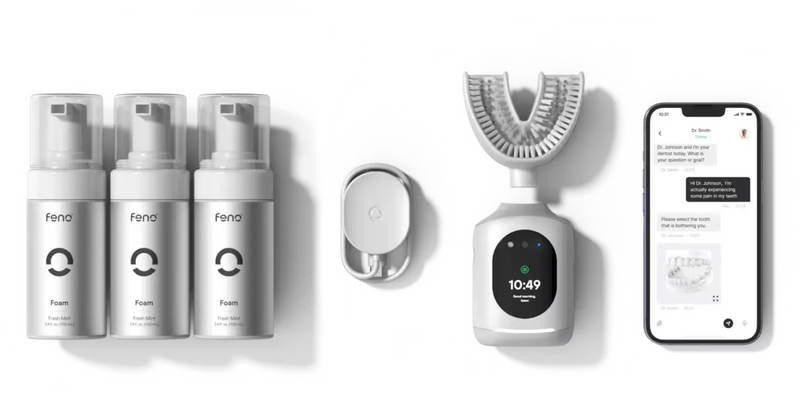
Feno Founders Edition Bundle
Advanced Oral Health in 20 Seconds with the Feno Smartbrush™
Get Yours Now!
Share
